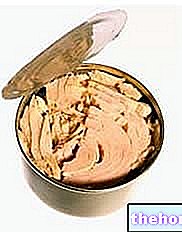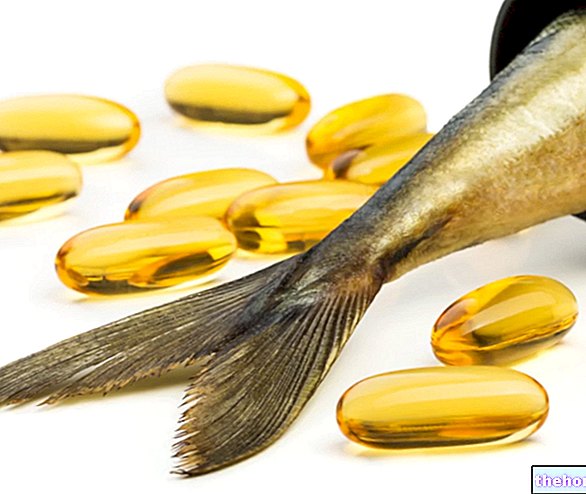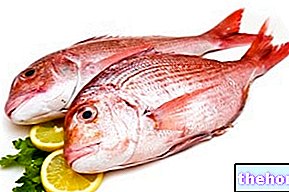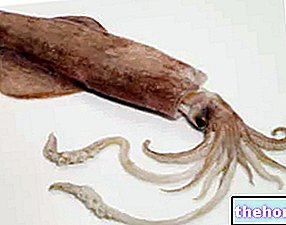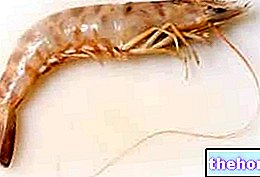Generality
Cockles are fishery products. These are bivalve molluscs (or lamellibranchs) belonging to the Veneridae family, Genus Callista, Species chione; the binomial nomenclature of cockles is Callista chione.

Description
The cockles have a shape similar to clams, sea truffles, hearts and donax; they have an oval shell, consisting of two symmetrical parts (valves), joined by a hinge (at which the growth point - umbo is located). The valves open and close to allow the filtering of the water; the closing of the latter takes place thanks to the adductor muscles of the internal mollusc. The external color of the cockles is light brown, with lighter and darker rays that depart longitudinally from the hinge up to at the edge of the valves, the growth lines are also evident transversely. The interior of the shell is white, with shades reminiscent of ceramic. The internal and external surface of the valves is totally smooth. The inner mollusk has a variegated pigment: light yellow, dark yellow and bright red.
Cockles are larger than clams: they reach 10cm in diameter and 100g in weight.
Habitat
The cockles colonize the Mediterranean basin and a part of the Atlantic Ocean (especially the north-eastern one). They prefer areas not far from the coast, on sandy and / or muddy bottoms between 15-20m deep (not less than 10, not more than 30m), in which they dig and are stationed in the subsoil. They feed by filtering the water and retaining the food in a similar way to clams; reproduction takes place in spring.
Fishing
Fishing for cockles takes place by means of large hydraulic turbo blowing dredges; unlike that of clams, cockpit fishing has never been significantly carried out with manual techniques, since the bathymetry on which they live is completely inaccessible. Unfortunately, the fishing of cockles does not spare these molluscs even in the breeding period and covers all 12 months of the year.
Gastronomic uses
Cockles are seafood. This is an imprecise classification but which defines quite clearly the culinary applications of the molluscs in question.
Unlike clams, cockles cannot completely drain, even if left several days in water and salt. In order to cook them it is therefore essential to open them manually (raw) and wash them carefully; some suggest to keep the internal liquids, but personally I believe that it is an "operation that excessively increases the risk of sandy residues in the finished product. The opening operation takes place by means of a paring knife or an oyster knife, better if protecting your hands with metal mesh gloves. It is therefore necessary to insert the blade into the gap between the valves and sever the adductor muscles or force the shell by levering with the blade. Once opened and cleaned, the cockles are ready to be: boiled or steamed (to enrich the seafood salad or the Catalan), sautéed with wine and parsley (sautéed cockles, with or without tomato), baked au gratin with a little breadcrumbs flavored with garlic, parsley, pepper and white wine. Fasolari are an ingredient widely used in the formulation of first courses based on fresh pasta and risotto. A recipe everyone should try is: Black tagliatelline with cockles, rapari (or shelled murex) and fresh parsley.
NB. The cockles have an extremely firm consistency; this means that excessive cooking would lead to hardening of the mollusc (especially of the foot), increasing chewing difficulties. On the other hand, insufficient heat treatment could increase the risk of contracting the HAV virus (viral hepatitis type A). Some suggest pounding the fasolaro mollusc with a meat mallet before cooking.
Many like the taste and texture of raw cockles, despite the fact that the risk of contracting certain serious food diseases (such as the aforementioned) is well known.
See also: raw fish, risks and benefits
Nutritional characteristics
Cockles are low-calorie foods and suitable for diet aimed at slimming; they contain an excellent supply of high biological value proteins and small quantities of lipids, while carbohydrates are almost absent. However, like other bivalve molluscs, cockles are subject to numerous forms of food allergy and their consumption is not recommended especially in case of pregnancy and in infant feeding. Another aspect to take into account is the poor digestibility of the food; despite boasting excellent chemical properties, cockles have a limited digestibility and this requires moderation of the portions which, in terms of "edible part", must not reach that of meat or fish proper.
There is insufficient information to carefully define the entire nutritional profile but it is likely that the cholesterol content is not entirely negligible.At the same time, observing the chemical properties of the other bivalves, the cockles could also boast an excellent quantity of iron, calcium, phosphorus and certain vitamins; on the other hand, the sodium content should limit its consumption in case of hypertension, even if, by eliminating the water inside the bivalve, the content of this mineral salt is drastically reduced.
Fish, Molluscs, Crustaceans Anchovies or Anchovies Garfish Alaccia Eel Lobster Herring Lobster Whitebait Bottarga Sea bass (Sea bass) Squid Canocchie Scallops Canestrelli (Sea scallops) Capitone Caviar Mullet Monkfish (Monkfish) Mussels Crustaceans Dates Sea Fruits Fish Flour Fauna Fish stock Prawns Crabs Spider crab (Granceola) Halibut Sea salad Lanzardo Leccia Sea snails Prawns Cod Molluscs Octopus Hake Ombrina Oysters Sea bream Bonito Pangasius Paranza Anchovy paste Fresh seasonal fish Blue fish Puffer fish Swordfish Plaice Octopus (Octopus) Hedgehog of Sea Amberjack Salmon Sardines Sardines Scampi Cuttlefish Mackerel Sole Stockfish Surimi Sushi Telline Tuna Canned tuna Mullet Trout Fish roe Bluefish Clams OTHER FISH ARTICLES Categories Alcoholic Food Meat Cereals and derivatives Sweeteners Sweets Offal Fruit Dried fruit Milk and derivatives Legumes Oils and fats Fish andpeach products Salami Spices Vegetables Health recipes Appetizers Bread, Pizza and Brioche First courses Second courses Vegetables and Salads Sweets and Desserts Ice creams and sorbets Syrups, liqueurs and grappa Basic preparations ---- In the kitchen with leftovers Carnival recipes Christmas Light diet recipes Women's, mom's and dad's day recipes Functional recipes International recipes Easter recipes Celiac recipes Diabetic recipes Holiday recipes Valentine's Day recipes Vegetarian recipes Protein recipes Regional recipes Vegan recipes

